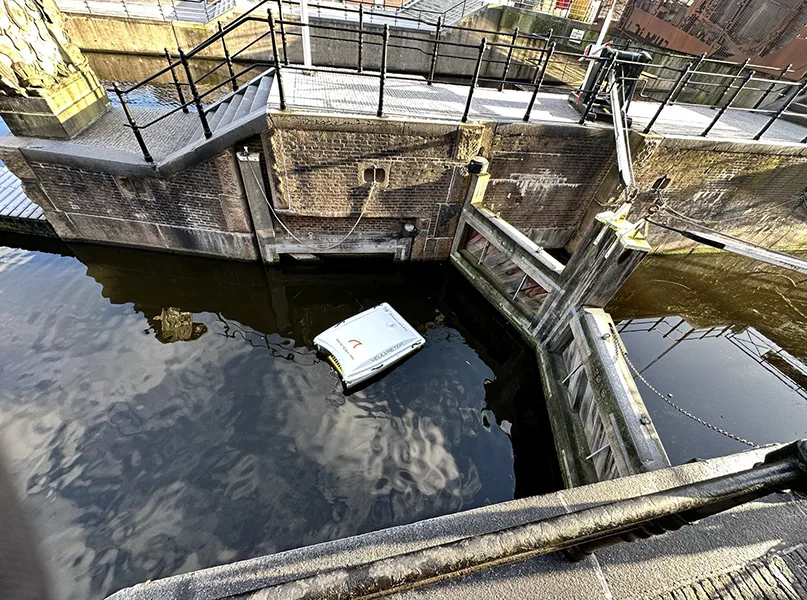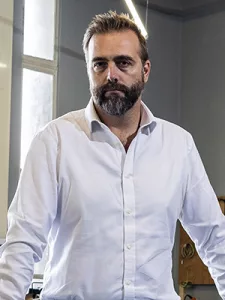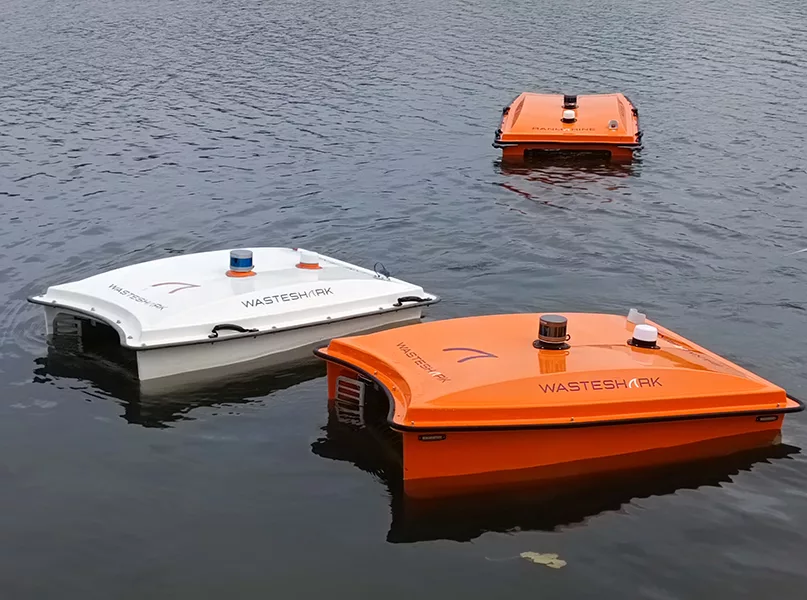5 uses for drones including Ocean clean-up efforts
When equipped with advanced sensors and imaging technologies, unmanned aerial systems – most commonly called drones – can provide crucial insights for waste and recycling facilities. While drones can aid in tasks such as site surveys and material volume estimation for recyclers, their role also extends beyond facility walls to help identify illegal dumpsites, map ocean waste, and more. This transformative technology not only streamlines processes within the recycling and waste management sectors, but also fosters cleaner environments and greener practices overall.
Other benefits of drones also include improved worker safety and increased labour savings. By using drones in place of human workers, operating expenses can be significantly reduced, resulting in more cost-effective operations. Drones have the added advantage of being able to navigate and collect data from areas that are usually hazardous or out of reach to humans, eliminating the need for human workers to access these sites.
While still considered an emerging technology in some applications, embracing drones contributes significantly to the efficiency, safety, and sustainability of recycling operations. Read on to find out five ways that drones are gaining traction as a key piece of technology in recycling and waste management applications.
Site mapping
While drones play a part in all kinds of recycling applications, they’ve found a particularly important role in scrapyards. Drones can quickly survey large areas, utilizing remote sensing and advanced imaging technologies to identify metal types, quantities, and their precise locations. The aerial perspectives offered by drones are instrumental in mapping scrapyards, assisting in inventory management, optimizing layout planning, and enhancing overall productivity.
On the waste management front, landfills also see significant benefits from the utilization of drones as the high-resolution aerial images are valuable for mapping landfill sites and calculating landfill capacity. Equipped with advanced technology such as LiDAR, drones can create detailed 3D maps of facilities, providing insights into the layout, volume, and best utilization of space within the landfill.
Monitoring methane emissions
Since methane is both colourless and odourless to humans, drones are being equipped with thermal cameras and deployed at waste facilities to monitor methane emissions from a safe distance. The U.S. Environmental Protection Agency mandates that landfills address methane concentrations over 500 parts per million and has recently approved the first drone for methane emissions monitoring. The SnifferDRONE by Sniffer Robotics collects air samples through a nozzle, pumps them to an onboard detector, measures the methane concentration, and reports leak source locations – including GPS coordinates – with 90 percent accuracy.
There have also been increased drone initiatives in Canada, with the government recently providing the Comox Valley Regional District in British Columbia with $51,000 to use drones for methane monitoring. The goal of this effort is to assist landfill workers in assessing the effectiveness of the technology, determine the advantages and challenges in the adoption of drones, and offer practical examples of how they can be integrated into existing operations.
Illegal dumping enforcement
Already used in Dublin, Ireland, and multiple cities across the UK, more and law enforcement agencies are deploying drones equipped with cameras to surveil areas prone to illegal dumping. Drones bolster enforcement efforts by providing efficient evidence collection and thorough documentation of violations that are vital for investigations, while also acting as a general deterrent through their presence alone.
Beyond documentation, drones provide a cost-effective surveillance solution by covering expansive or hard-to-reach areas with minimal human labour requirements. Data gathered by drones also enables law enforcement to track dumping patterns and stay ahead of them.
Drones equipped with thermal cameras can monitor methane emissions from a safe distance.
Fire prevention
When equipped with thermal cameras, drones can identify hot spots that may indicate potential fire hazards. The real-time monitoring provided by drones also allows for the quick detection of signs of fire, enabling proactive measures to be taken.
One of the most effective examples of this technology is in Australia, where a fire prevention program targeting high-risk recycling and waste facilities was launched in 2021. As part of this, drones equipped with thermal imaging technology conduct random flyovers during the summer months to check for hot spots and ensure waste piles are being properly managed. Between November 2022 and October 2023, the officers carried out 380 fire prevention inspections at waste and recovery facilities, fining five facilities and issuing 117 remedial notices and four official warnings.
Ocean clean-up efforts
With plastic pollution affecting oceans and shorelines worldwide, there’s a lot of ground to cover – too much to cover on foot. By combining the power of drones with artificial intelligence, organizations are leveraging these tools to combat waste and pollution in the environment. One of these initiatives, the Plastic Tide, is a volunteer-based project that uses drone imagery of coastlines to train its AI algorithm to identify and map plastic debris. To improve the algorithm’s accuracy, a steady stream of drone images is needed to help distinguish between plastic and other coastal life. This has resulted in a database of over 7,000 images which allows others to develop strategies for tackling these hot spots and tailor their clean-up processes accordingly. The organization hopes that one day the database can be used to guide autonomous recovery vehicles as well.
Another key player in drone-based water cleanup efforts is the WasteShark by RanMarine, an aquatic drone that captures garbage in waterways and brings it back to land. The drones can hold 160 litres of materials and are equipped to autonomously navigate through rivers, harbours, and canals, collecting floating debris and waste as they move. Integrated LiDAR technology enhances safety and avoids collisions.
This convergence of drones and advanced technology represents a powerful force in the ongoing battle against plastic pollution, allowing for collaboration between humans, drones, and AI for a more sustainable future.
Barriers to adoption
While a hugely beneficial tool, the adoption of drones in recycling and waste management operations faces several interconnected challenges. Regulatory compliance, such as airspace restrictions and privacy concerns, represents a significant hurdle, complicating widespread adoption. The initial costs associated with buying drones, sensors, and software are barriers as well, especially for smaller facilities with limited budgets.
Despite these challenges, the future of drones holds promise as advancements in technology, regulations, and overall public perception continue to evolve. Overcoming these barriers requires a coordinated effort between regulatory bodies, industry stakeholders, and technology developers to improve the overall chances of incorporating drones into recycling and waste management practices.
<Original article published https://www.recyclingproductnews.com/article/41556/5-uses-for-drones-in-recycling-and-waste-management >





